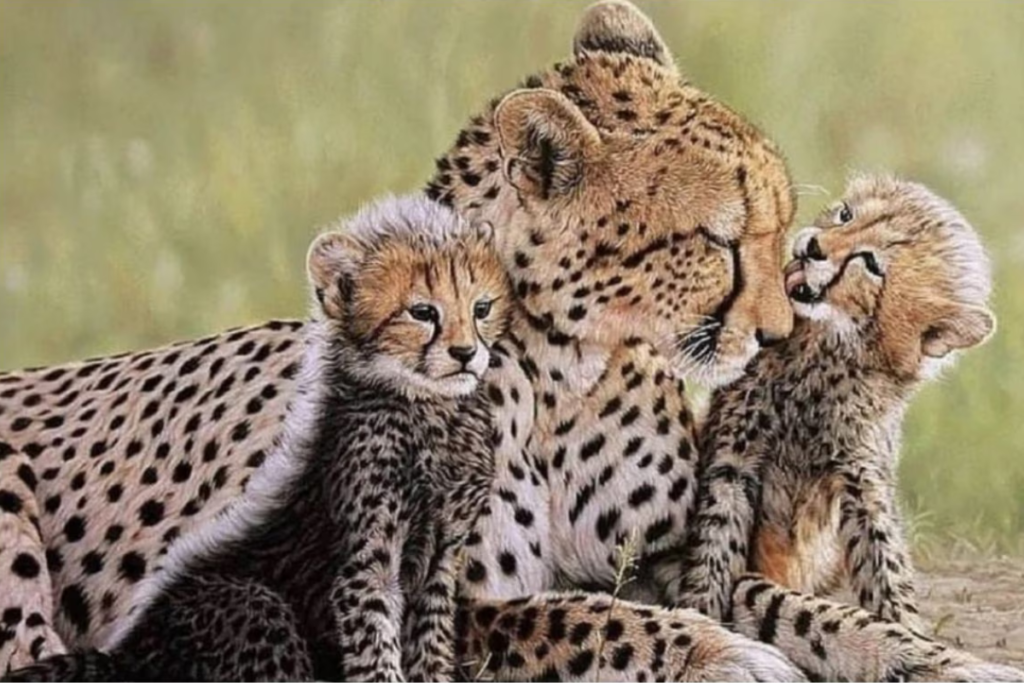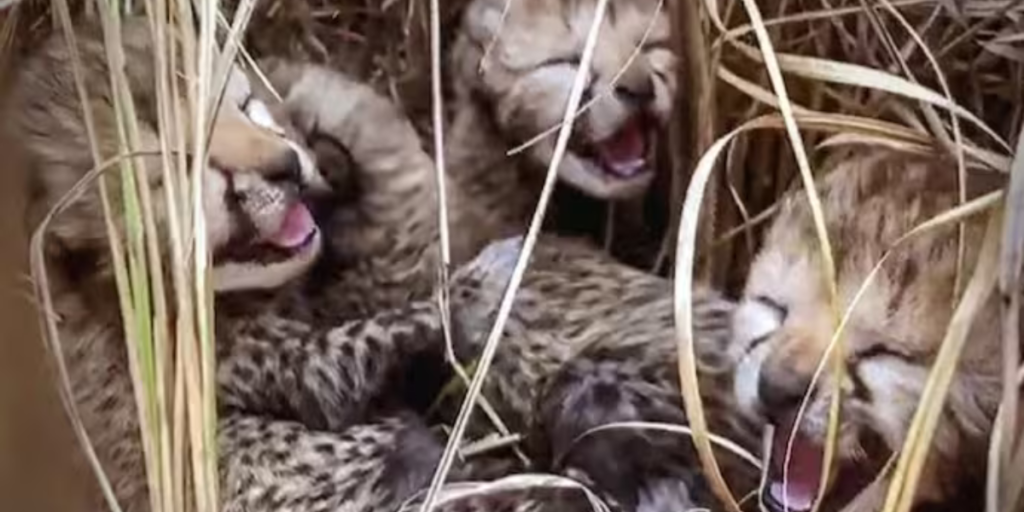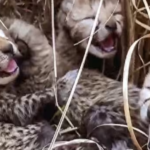In this article, “Historic Birth of Cheetah Cubs” : Why this is a Turning Point in Indian Wildlife Conservation?” you will read all the factors that make it a turning point. In a monumental stride for Indian wildlife conservation, Siyaya, a three-year-old cheetah, has welcomed the world to witness the arrival of her four vibrant cubs right in the heart of Kuno National Park. Siyaya, who embarked on her Indian journey from Namibia in 2022, now stands as a beacon of hope and resilience for the revival of cheetahs in India.

Historic Birth of Cheetah Cubs: Why this is a Turning Point in Indian Wildlife Conservation?
Expert Confirmation: Eli Walker Validates Siyaya’s Motherhood
The pivotal confirmation of Siyaya’s recent motherhood owes much to the watchful expertise of Eli Walker, a distinguished Namibian cheetah specialist. Eli Walker’s attentive observations bore witness to the playful antics of the cubs within their secure enclosure. At present, both Siyaya and her cubs thrive in excellent health, a testament to the meticulous care provided by India’s diligent wildlife authorities.
Project Cheetah: A Vision to Restore Cheetahs in India
Project Cheetah, an ambitious initiative aimed at reintroducing cheetahs to India, stands as a collective endeavour. It has garnered unwavering support from notable figures such as Prime Minister Shri Narendra Modi, the Ministry of Environment, Forest, and Climate Change, and dedicated forest custodians. Siyaya’s cubs represent a significant stride towards restoring the ecological equilibrium disrupted by the tragic extinction of cheetahs in India.
Bhupender Yadav’s Joy: A Testimony to the Team’s Dedication
Union Environment Minister Bhupender Yadav rejoices in the indomitable spirit of the Project Cheetah team following Siyaya’s motherhood. His accolades resonate with the tireless efforts of those who have worked tirelessly to reintroduce these magnificent creatures to their homeland, thus upholding their ecological legacy.
Cheetahs Thriving in Kuno National Park
The birth of Siyaya’s cubs serves as a heartening testament to the seamless adaptation of cheetahs to their new home within Kuno National Park. Stress-free conditions have not only allayed concerns but have also facilitated natural mating and reproduction, underscoring the park’s suitability as a cheetah habitat.

Renewed Hope Amidst Challenges
While the unfortunate loss of the female cheetah, Sasha, to renal failure serves as a poignant reminder of the challenges inherent in conservation efforts, Siyaya’s cubs breathe new life into the narrative. Their arrival is a resounding declaration that cheetahs not only belong here but can also thrive and multiply on this sacred soil.
A Historic Occasion
This event is genuinely historic, etching an indelible mark in the sands of time. It marks the first cheetah cubs born in India in over seven decades. The reintroduction of these cubs signifies a fresh start for cheetah conservation, rectifying the historical loss of these majestic creatures.
A Bright Future for Cheetah Conservation in India
The promising future for cheetah conservation in India arises from the collaborative efforts of Project Cheetah, scientific expertise, and the meticulous creation of a hospitable environment within Kuno National Park. The unwavering commitment of the Project Cheetah team, bolstered by government support and ignited by the passion of wildlife enthusiasts, guarantees the sustained survival and flourishing of cheetahs in India.
In summary, the birth of Siyaya’s four cubs in Kuno National Park signifies a significant milestone in the tireless pursuit of reintroducing cheetahs to the Indian landscape. Their arrival represents hope, determination, and a promising chapter in the cheetah conservation saga. With dedication and conservation initiatives, the cheetah population in India can once again thrive, promising a radiant future for these iconic creatures.









